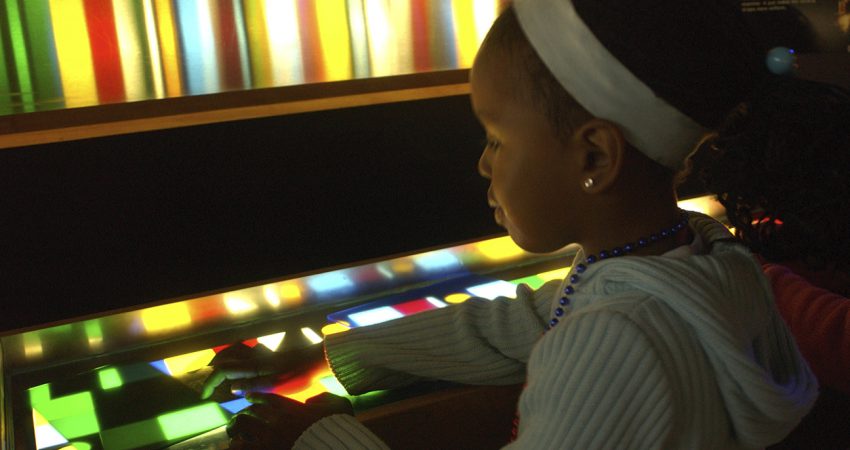
By Suzanne Perin - March 2011
PAPER CITATION
Dewitt, J., & Hohenstein, J. (2010). School trips and classroom lessons: An investigation into teacher student talk in two settings. Journal of Research in Science Teaching, 47(4), 454-473.
In teacher-student interactions during pre-visit, in-museum, and post–field trip interactions, open-ended styles of questions tended to happen more often during the in-museum part of the field trip, although closed-ended questions were still more frequent overall. This study compared teacher-student interactions in the classroom with interactions during a field trip to a science center, with the idea that those interactions may be different in the two settings in key ways, which might lend insight into how learning is supported in out-of-school settings. The paper has implications for the design of structured field trips to many kinds of settings in addition to museums, for pre-trip preparation for teachers, or for programs aimed at classroom work.
In classrooms, interaction between teacher and students is often dominated by the teacher and takes a form of initiation-response-evaluation/feedback (IRE/IRF), in which the teacher initiates a conversation often in the form of a question, a student responds, and the teacher provides an assessment of the answer or some other feedback, perhaps in the form of another question. The authors contend that teacher-dominant talk in the classroom may be due to the demands on the teacher to cover curriculum, perform on assessments, and teach to varying levels of students, which limits their feelings of flexibility. Past research on field trips has resulted in mixed views on the quality of interactions, which range from unstructured time to worksheet activities or docent-led tours. Teacher talk in these settings has not been examined in detail, so this study set out to look at two aspects of teacher-student interaction: teacher questions and the form of their questions as triadic (teacher-student-teacher).
Three primary school classes and one secondary school class were studied during their pre-visit lesson, while they visited the museum, and as then the students created follow-up presentations back at school. Teachers were audio-recorded and the researchers made detailed observations. The recordings were transcribed and coded to capture the types of discourse between teachers and students.
The findings showed that closed-ended questions, task related or procedural types of questions predominated classroom and field trip time. However, nontriadic discourse patterns happened more frequently during the museum visit than in the pre- and post- museum visit classroom lessons attended by the researchers. Nontriadic discourse was less authoritative than triadic, suggesting that the teacher's role was less dominant than it typically was in the classroom. Reflection, reason, explanation, or description were expected responses from the students. For example, students tended to volunteer statements more frequently during the museum visit than in the classroom. In these interactions, they took the initiative to share information with the teacher, suggest actions for the class to take, or contradict the teacher.
In recognizing that open-ended styles of questions tend to happen more often during a field trip to a museum, but that closed-ended questions are still more frequent overall, informal educators may want to include (in their field-trip pre-visit materials) some guidance for teachers concerning the types of question and answer possibilities most appropriate and enriching during the field trip. Because teachers are often concerned with managing their students in an out-of-school environment, taking steps to organize the groups may relieve some of that burden on teachers and other adult chaperones, freeing them to engage in open-ended conversations with students.
Questions to consider include: What kinds of questions do you hope teachers, parents, or other adults will ask the children in their care? How can you guide them to that type of interaction?




